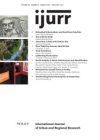When the concept of growth machine was created more than twenty years ago, it seemed unlikely that it would ever reach Eastern Europe. Now, about fifteen years after the beginning of the post‐socialist transformation, the growth machine is also part of urban politics in the former socialist countries. This article will try to fill a gap in growth machine research, examining this concept in a post‐socialist environment through the case of Hungary. The concept of growth machine is based on a powerful argument about a coalition promoting economic growth, and shows considerable flexibility around the Western world. Although in post‐socialist Eastern Europe the interlocked political and economic power accumulation is the same, there are significant differences both in terms of the composition and operation of the growth machine. The Hungarian example shows that the post‐socialist growth machine is strongly shaped by the socialist legacy of the region. Its operation is also influenced by the elite transformation after the collapse of socialism and the presence of powerful external actors, like the nation state or transnational investors. Moreover, the contemporary social context is very supportive, since the political and economic interests are closely connected and the counter‐movements are relatively weak. We develop a theoretical framework, supported by examples of urban development in two Hungarian cities that offer interesting differences in their political and economic environment.
Details
Written by:
LASZLO J KULCSAR, TAMAS DOMOKOS
Digital Object Identifier (DOI)
10.1111/j.1468-2427.2005.00605.x
About DOI
Read full article as PDF
Read full article as HTML
See the references for this article
